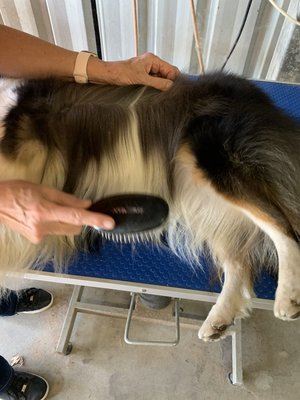Sheltie Information
The Shetland Sheepdog is a small, active, and agile herding dog standing between 13 and 16 inches at the shoulder. The long coat is harsh and straight, with a dense undercoat, and comes in black, blue merle, and sable, with white markings.
The coat, along with a long, wedge-shaped head; small, three-quarter erect ears; and deep-chested, level-backed torso, give Shelties the look of a rough-coated Collie in miniature.
Bright and eager Shelties are easy trainers and world-class competitors in obedience, agility, and herding trials. They are sensitive and affectionate family dogs, highly in tune with the mood of the household. They like to bark and tend to be reserved toward strangers—two qualifications of an excellent watchdog.
Exercising Shelties
Shelties are active and athletic, and while they need a moderate amount of exercise, they are also very adaptable to their family’s way of life.
Shelties do well as city dogs as long as their owners provide sufficient exercise. Shelties love to spend time with their human family and to go on outings that exercise both their mind and body.
Shelties get along well with other friendly dogs, enjoy and excel in many canine events, including obedience, agility, herding and tracking.
Nutrition
The Shetland Sheepdog should do well on a high-quality dog food, whether commercially manufactured or home-prepared.
Any diet should be appropriate to the dog’s age (puppy, adult, or senior). Some dogs are prone to getting overweight, so watch your dog’s food consumption and weight level.
Treats can be an important aid in training, but giving too many can cause obesity.
Learn about what human foods are safe for dogs, and which are not. Check with your vet if you have any concerns about your dog’s weight or diet.
Clean, fresh water should be available at all times.
Grooming Shelties
The Sheltie has a profuse double coat that sheds considerably. The outer coat consists of long, straight, harsh hair, while the undercoat is short, furry, and very dense.
Owners must be prepared to brush the coat weekly, and more often during shedding season, to help in removing at least some of the loose hair before it drifts all over the house.
Be sure to check for mats behind the ears, under the elbow on each front leg, and in the “pants” under the tail.
Shaving the dog is not recommended, because the coat protects against sunburn and heat as well as cold.
The Sheltie needs a bath only occasionally. The nails should be trimmed regularly.

